Sea freight, also known as ocean freight, is the process of transporting goods via cargo ships across the world’s oceans. It is the most cost-effective and widely used method for international shipping, especially for large and heavy consignments. With the ability to move vast quantities of goods, sea freight is a cornerstone of global trade. It involves various stages, including loading goods onto ships, navigating designated shipping routes, and unloading at the destination port.
The trade relationship between China and the UK is robust and ever-expanding, driven by the demand for a wide range of goods, from electronics to textiles. Sea freight plays a crucial role in this dynamic trade environment, providing an economical and scalable solution for moving large volumes of goods over long distances. Given the considerable distance between China and the UK, sea freight remains the preferred method for many businesses looking to optimize their supply chain costs while maintaining the integrity and security of their shipments.
You may also be interested in:Shipping From China To UNITED KINGDOM
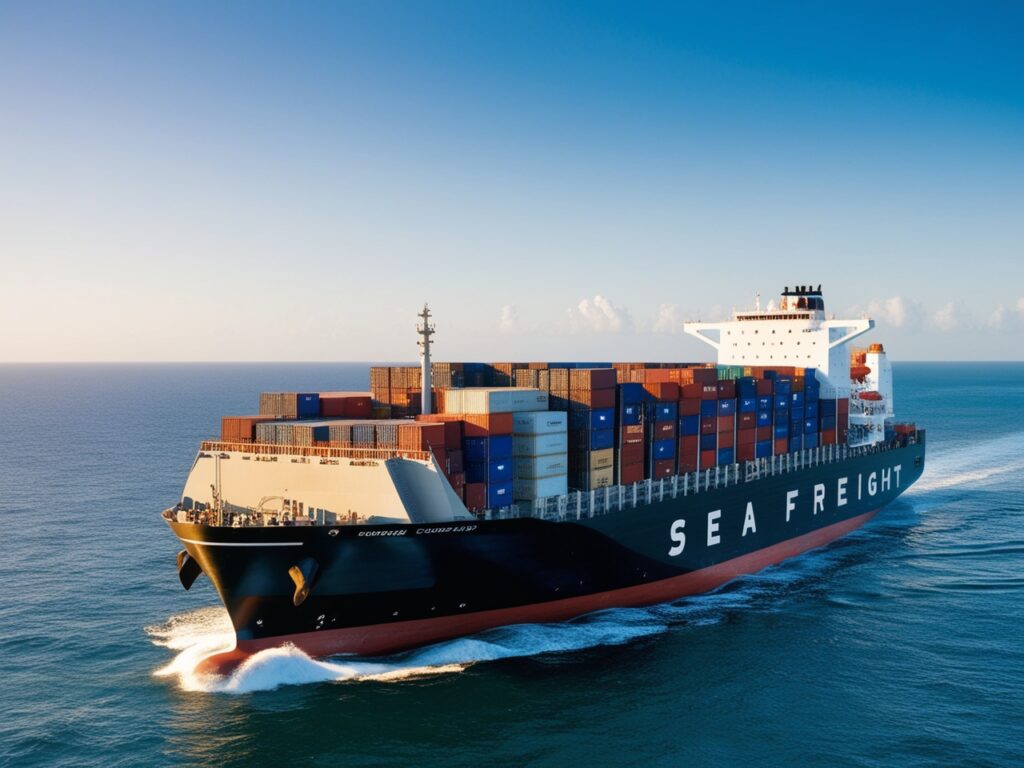
Table of Contents
1. Understanding Sea Freight
What is Sea Freight?
Sea freight involves the transportation of goods by ships over international waters. Unlike air freight, which is faster but more expensive, sea freight offers a slower yet significantly more cost-effective alternative for bulk shipments. Goods transported via sea freight are typically loaded into containers, which are then transferred onto cargo ships. These ships follow scheduled routes, stopping at designated ports to load and unload cargo.
Types of Sea Freight Services
- FCL (Full Container Load)
Full Container Load (FCL) refers to a shipping mode where a single container is exclusively used by one shipper. This mode is ideal for businesses with large volumes of goods, as it allows for better control over the loading process and minimizes the risk of damage. FCL shipments are typically more secure and less prone to delays, as the container does not need to be consolidated or deconsolidated with other shippers’ goods. - LCL (Less than Container Load)
Less than Container Load (LCL) is a shipping method where multiple shippers share the same container. This mode is suitable for smaller shipments that do not require an entire container. While LCL can be more cost-effective for small volumes, it may involve longer transit times and a higher risk of damage due to the handling of multiple consignments within the same container. Proper packaging and clear labeling are essential to ensure the safety of LCL shipments. - RORO (Roll-on/Roll-off)
Roll-on/Roll-off (RORO) refers to a shipping method primarily used for transporting vehicles and heavy machinery. In RORO shipping, vehicles are driven directly onto the vessel at the port of origin and driven off at the destination port. This method eliminates the need for containerization, making it an efficient and cost-effective solution for shipping large vehicles and equipment.
By leveraging the expertise of reliable freight forwarders like Dantful International Logistics, companies can navigate the complexities of sea freight and optimize their supply chain operations.
2. Shipping Routes from China to the UK
Major Chinese Ports
China boasts several major ports that serve as critical hubs for sea freight to the UK. These ports include:
- Port of Shanghai: The busiest container port in the world, handling a significant portion of China’s exports.
- Port of Shenzhen: Located in Guangdong Province, this port is a major gateway for goods from Southern China.
- Port of Ningbo-Zhoushan: Known for its deep-water capabilities, it is crucial for handling heavy cargo.
- Port of Qingdao: Serving Northern China, this port is essential for industries in Shandong Province.
- Port of Guangzhou: Another key port in the Pearl River Delta, pivotal for manufacturing exports.
Major UK Ports
The UK has several prominent ports that facilitate the import of goods from China, including:
- Port of Felixstowe: The largest container port in the UK, handling nearly half of the country’s containerized trade.
- Port of Southampton: A major deep-water port, crucial for both container and bulk cargo.
- Port of London: One of the oldest and most versatile ports in the UK, capable of handling various types of cargo.
- Port of Liverpool: Serving the North of England, it is a critical hub for container and bulk shipments.
- Port of Tilbury: Located on the River Thames, this port is essential for logistics and distribution within the UK.
Common Shipping Routes
The most common sea freight routes from China to the UK typically follow these paths:
- North Pacific Route: Starting from ports like Shanghai or Shenzhen, vessels traverse the North Pacific Ocean, pass through the Panama Canal, and reach UK ports such as Felixstowe or Southampton.
- Suez Canal Route: Ships from ports like Ningbo or Qingdao navigate through the South China Sea, across the Indian Ocean, transit the Suez Canal, and sail through the Mediterranean and the Strait of Gibraltar to reach UK destinations.
- Arctic Route: During certain seasons, some vessels take the Northern Sea Route, passing north of Russia, offering a shorter but less predictable journey.
These routes provide flexibility and options based on factors such as weather, fuel costs, and geopolitical considerations.
3. Costs Involved in Sea Freight
Understanding the various costs involved in sea freight is crucial for budgeting and financial planning. Here are the primary cost components:
Freight Charges
Freight charges are the fees associated with transporting goods from the port of origin to the destination port. These charges vary based on the shipping route, container size, and the shipping line used.
Customs Clearance Fees
Customs clearance fees cover the cost of processing your shipment through customs at both the origin and destination ports. This includes import duties, taxes, and any other regulatory fees required to clear your goods.
Port Handling Charges
Port handling charges encompass the costs associated with loading and unloading cargo, storage, and terminal handling at the ports. These fees are determined by the port authorities and vary based on the type of cargo and the services required.
Insurance Costs
Insurance costs are crucial for protecting your goods against potential risks such as damage, loss, or theft during transit. Various insurance options are available, including marine cargo insurance, which covers the shipment from the point of origin to the final destination.
Additional Charges
Additional charges may include:
- Fuel Surcharge: A variable fee based on fluctuating fuel prices.
- Peak Season Surcharge: An extra fee applied during periods of high demand, typically around major holidays or trade shows.
- Documentation Fees: Costs associated with preparing and processing shipment documents.
4. Documentation Required
Proper documentation is essential for smooth and compliant sea freight shipping. The key documents include:
Bill of Lading (BOL)
The Bill of Lading (BOL) is a legal document issued by the carrier to the shipper, outlining the details of the shipment, including the type, quantity, and destination of the goods. It serves as a receipt and a contract for the shipment.
Commercial Invoice
The commercial invoice is a document provided by the exporter detailing the goods sold, their value, and the terms of sale. It is used by customs authorities to assess duties and taxes.
Packing List
The packing list provides detailed information about the contents of the shipment, including the weight, dimensions, and packaging of each item. It is used for customs inspection and inventory management.
Certificate of Origin
The certificate of origin is a document certifying the country where the goods were manufactured. It is often required by customs authorities to determine the applicable tariffs and duties.
Customs Clearance Documents
Customs clearance documents include various forms and declarations required by customs authorities to process the shipment. These may include import licenses, regulatory certifications, and any other documents needed to comply with international trade regulations.
By ensuring all necessary documentation is complete and accurate, businesses can avoid delays, penalties, and additional costs. Partnering with a reliable freight forwarder like Dantful International Logistics can help streamline this process and ensure compliance with all regulations.
5. Timeline for Shipping from China to the UK
Average Transit Times
The average transit time for sea freight from China to the UK typically ranges from 25 to 40 days. This timeframe can vary based on several factors, including the specific ports involved, the shipping route chosen, and any intermediate stops the vessel may make.
Here is a general overview of transit times for major routes:
| Route | Transit Time |
|---|---|
| Shanghai to Felixstowe | 30-35 days |
| Ningbo to Southampton | 28-33 days |
| Shenzhen to Liverpool | 32-38 days |
| Qingdao to London | 25-30 days |
Factors Affecting Transit Time
Several factors can influence the transit time of sea freight shipments:
- Port Congestion: Busy ports can lead to delays in loading and unloading cargo.
- Weather Conditions: Severe weather such as storms can affect sailing schedules and cause delays.
- Customs Clearance: Delays in customs clearance at either the origin or destination port can extend the transit time.
- Transshipment: If the shipment requires transshipment (transferring cargo from one vessel to another), it may add additional days to the transit time.
- Peak Seasons: High demand periods, such as around major holidays or trade events, can result in longer transit times due to increased cargo volumes.
Tips for Ensuring Timely Delivery
To ensure timely delivery of your shipments from China to the UK, consider the following tips:
- Plan Ahead: Book shipments well in advance, especially during peak seasons, to secure space on vessels.
- Choose Direct Routes: If possible, opt for direct shipping routes to minimize transit time.
- Monitor Weather: Keep an eye on weather forecasts and plan shipments accordingly.
- Work with Reliable Partners: Partner with trustworthy freight forwarders like Dantful International Logistics to ensure efficient handling and transit of your cargo.
- Prepare Documentation in Advance: Ensure all necessary documentation is complete and accurate to avoid delays in customs clearance.
6. Customs and Import Regulations
UK Customs Regulations
The UK has specific customs regulations that must be followed to import goods. These regulations ensure compliance with trade laws, safety standards, and taxation requirements. Key aspects of UK customs regulations include:
- Import Declarations: All goods entering the UK must have an import declaration submitted to HM Revenue and Customs (HMRC).
- Customs Valuation: The value of imported goods must be declared accurately to calculate duties and taxes.
- Restricted and Prohibited Goods: Certain items may be restricted or prohibited from import, requiring special permits or certifications.
Import Duties and Taxes
Import duties and taxes are levied on goods entering the UK to protect domestic industries and generate revenue. Key components include:
- Customs Duty: A tax based on the value, type, and origin of the goods.
- Value Added Tax (VAT): A consumption tax applied to the value of the goods, including customs duty and other costs like shipping and insurance.
- Excise Duty: Specific to certain products such as alcohol and tobacco, it is calculated based on quantity rather than value.
Necessary Certifications and Standards
Certain goods require specific certifications and standards to be met before they can be imported into the UK. These may include:
- CE Marking: Indicates that a product meets EU safety, health, and environmental requirements.
- Food Safety Certifications: Necessary for importing food products, ensuring they comply with UK food safety regulations.
- Product Testing and Certification: Products such as electronics may require testing and certification to ensure they meet UK standards.
7. Incoterms and Their Importance
Overview of Incoterms
Incoterms (International Commercial Terms) are a set of standardized trade terms used globally to define the responsibilities of buyers and sellers in international transactions. Published by the International Chamber of Commerce (ICC), Incoterms clarify who is responsible for various aspects of the shipping process, such as transportation, insurance, and customs duties.
Most Common Incoterms Used in China-UK Shipping
- FOB (Free on Board)
FOB (Free on Board) means the seller is responsible for delivering the goods to the port of shipment and loading them onto the vessel. The buyer assumes responsibility for the goods once they are on board, including transportation, insurance, and customs clearance at the destination port. This term is widely used for sea freight as it offers a clear division of responsibilities. - CIF (Cost, Insurance, and Freight)
CIF (Cost, Insurance, and Freight) requires the seller to cover the cost of shipping, insurance, and freight to the port of destination. The buyer is responsible for unloading, customs clearance, and any further transportation. CIF is often preferred when the seller has better access to affordable shipping and insurance services. - DDP (Delivered Duty Paid)
DDP (Delivered Duty Paid) places maximum responsibility on the seller, who must deliver the goods to the buyer’s specified location, covering all costs, including transportation, insurance, and import duties. The buyer is only responsible for unloading the goods. This term provides convenience for the buyer but can be more costly for the seller due to the added responsibilities.
Understanding and selecting the appropriate Incoterms for your shipments can significantly impact your logistics and cost management. By working with experienced freight forwarders like Dantful International Logistics, you can navigate these complexities and ensure smooth and efficient shipping operations.
8. Choosing the Right Freight Forwarder
Selecting a reliable freight forwarder is crucial for the seamless and efficient movement of goods across international borders. A trusted freight forwarder acts as an intermediary between the shipper and various transportation services, ensuring that goods are transported from the point of origin to the final destination without any hiccups.
What to Look for in a Freight Forwarder
When selecting a freight forwarder, it’s essential to consider the following factors to ensure they meet your shipping needs:
- Experience and Reputation: Choose a forwarder with a proven track record and positive reviews from other clients. Industry experience indicates reliability and expertise.
- Range of Services: Ensure the forwarder offers a comprehensive suite of services, including air freight, ocean freight, customs clearance, and warehouse services.
- Global Network: A forwarder with a broad global network of partners and agents can handle shipments to and from various locations efficiently.
- Customer Service: Responsive and proactive customer service is crucial for addressing any issues that may arise during the shipping process.
- Technology: Modern freight forwarders use advanced technology and tracking systems to provide real-time updates and enhance transparency.
- Competitive Pricing: While cost shouldn’t be the only factor, ensure that the forwarder offers competitive rates without compromising on service quality.
Why Choose Dantful International Logistics
Dantful International Logistics stands out as a premier choice for businesses engaged in global trade, offering a highly professional, cost-effective, and high-quality one-stop international logistics service. Here are several reasons to choose Dantful International Logistics:
- Comprehensive Service Portfolio: Dantful offers a wide range of services, including air freight, ocean freight, customs clearance, warehouse services, and insurance. This comprehensive service portfolio ensures that all your logistics needs are met under one roof.
- Global Reach: With a robust global network, Dantful can handle shipments to and from virtually any part of the world, including specialized regions like AFRICA, AMERICA, ASIA, EUROPE, and the MIDDLE EAST.
- Expertise and Experience: With years of experience in the logistics industry, Dantful’s team of professionals possesses the expertise needed to navigate complex shipping regulations and ensure timely delivery.
- Customer-Centric Approach: Dantful prioritizes customer satisfaction, providing personalized solutions and maintaining open lines of communication throughout the shipping process.
- Advanced Technology: Utilizing state-of-the-art tracking systems and logistics software, Dantful ensures transparency and real-time updates, enabling clients to monitor their shipments closely.
- Competitive Pricing: Dantful offers competitive pricing without compromising on service quality, making it an economical choice for businesses of all sizes.
Dantful International Logistics Services:
- Dantful Ocean Freight Services
- Air Freight From China
- Amazon FBA Freight Forwarding
- WAREHOUSE Services
- One-Stop Customs Clearance Solution
- Cargo Insurance Services in China
- DDP Shipping Services By Dantful Logistics
- Out of Gauge Cargo Transportation Shipping Services
FAQs (Frequently Asked Questions)
- What types of goods can Dantful International Logistics handle?
Dantful can handle a wide range of goods, including electronics, textiles, machinery, automotive parts, and more. Their services are tailored to meet the specific needs of different industries. - How can I track my shipment with Dantful International Logistics?
Dantful provides a state-of-the-art tracking system that allows you to monitor your shipment in real-time. You will receive a tracking number upon booking, which you can use to check the status of your shipment via their online portal. - What are Incoterms, and why are they important?
Incoterms are international commercial terms that define the responsibilities of buyers and sellers in international transactions. They are important because they clarify who is responsible for various aspects of the shipping process, such as transportation, insurance, and customs duties. - Does Dantful offer insurance services for shipments?
Yes, Dantful offers comprehensive insurance services to protect your goods against potential risks such as damage, loss, or theft during transit. - What should I consider when choosing a freight forwarder?
Key factors to consider include experience and reputation, range of services, global network, customer service, technology, and competitive pricing.
References
- International Chamber of Commerce (ICC). “Incoterms 2020.” Link
- HM Revenue and Customs (HMRC). “Importing and Exporting.” Link
- World Shipping Council. “About the Industry.” Link

Young Chiu is a seasoned logistics expert with over 15 years of experience in international freight forwarding and supply chain management. As CEO of Dantful International Logistics, Young is dedicated to providing valuable insights and practical advice to businesses navigating the complexities of global shipping.






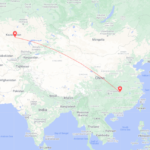

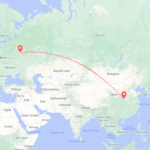
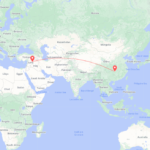
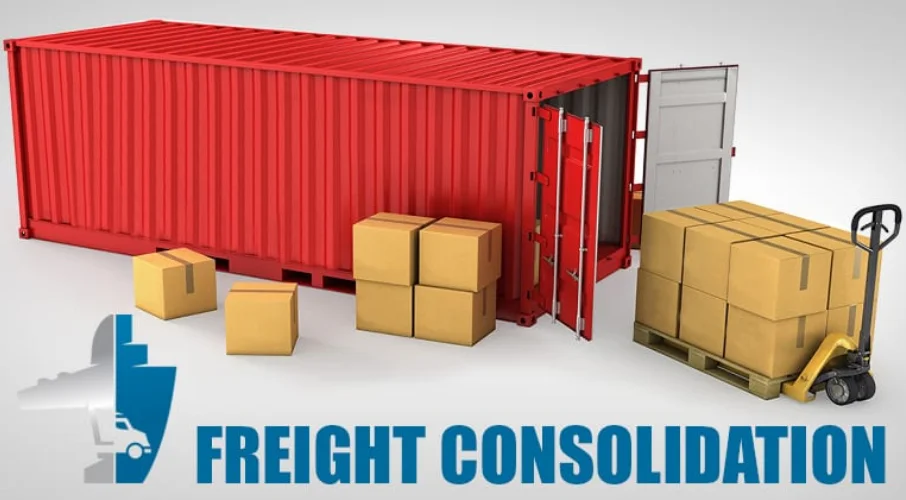
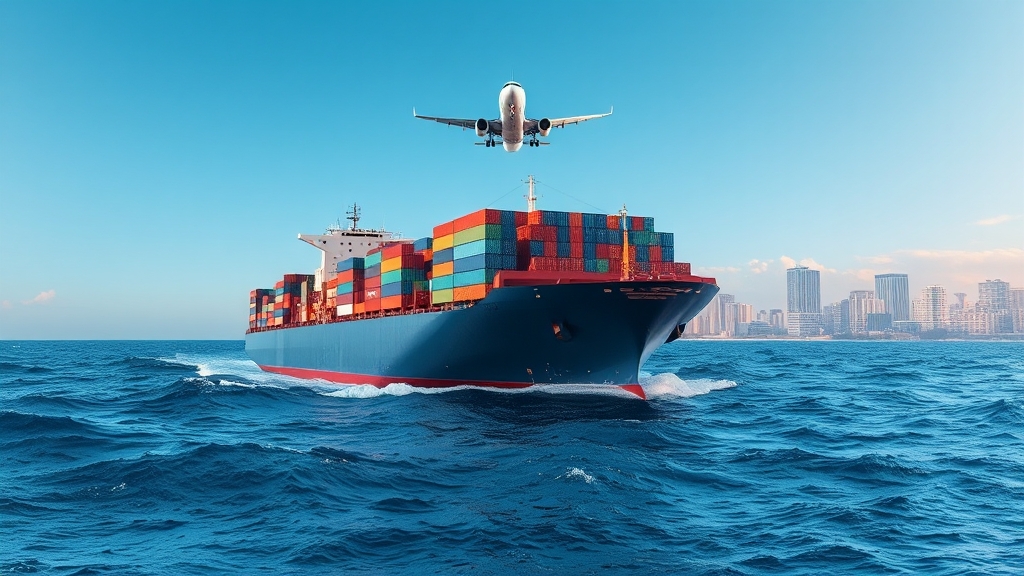
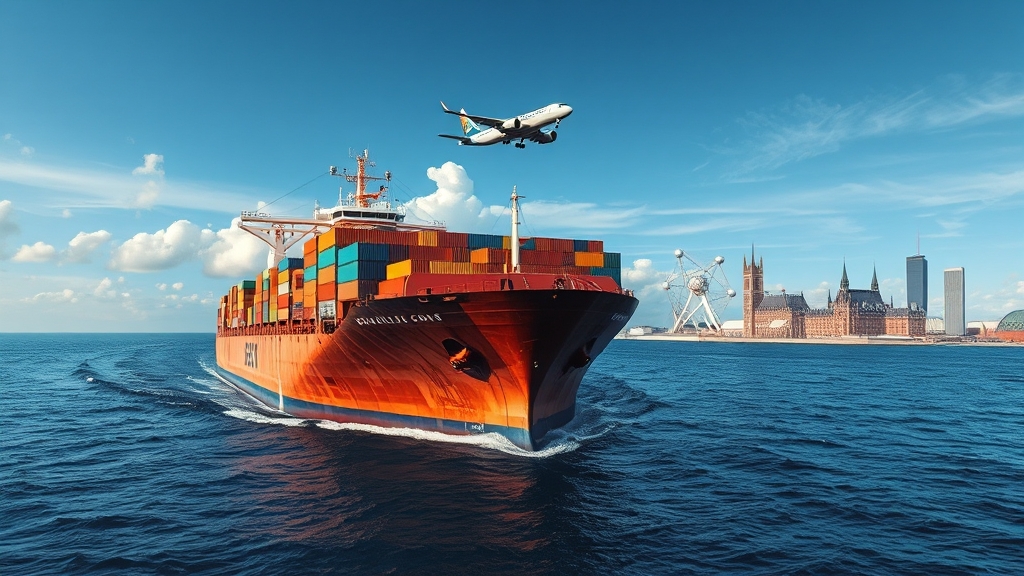
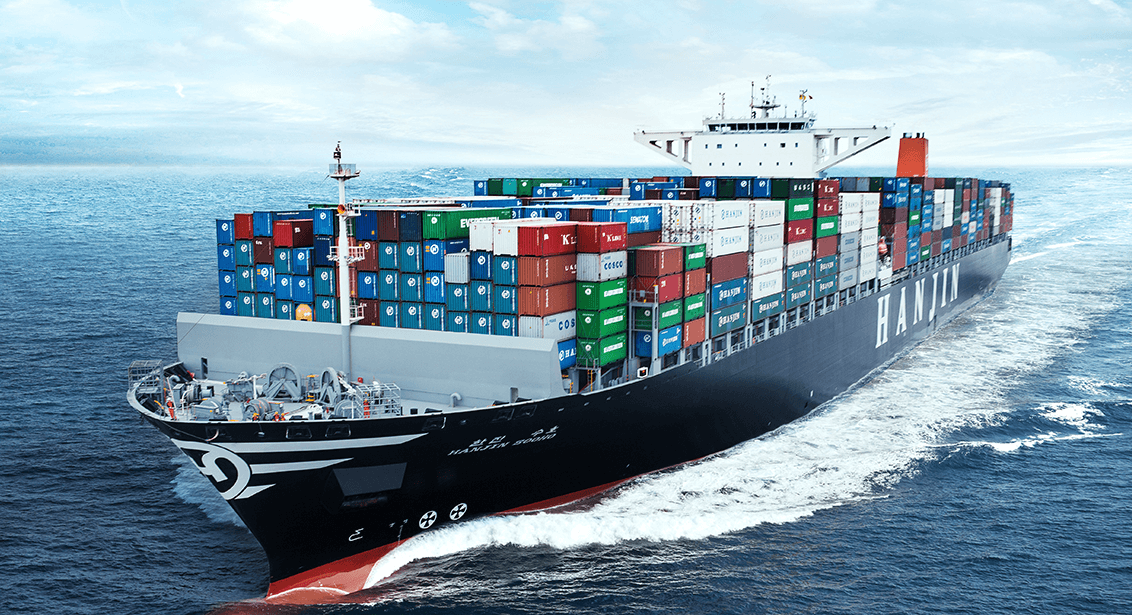
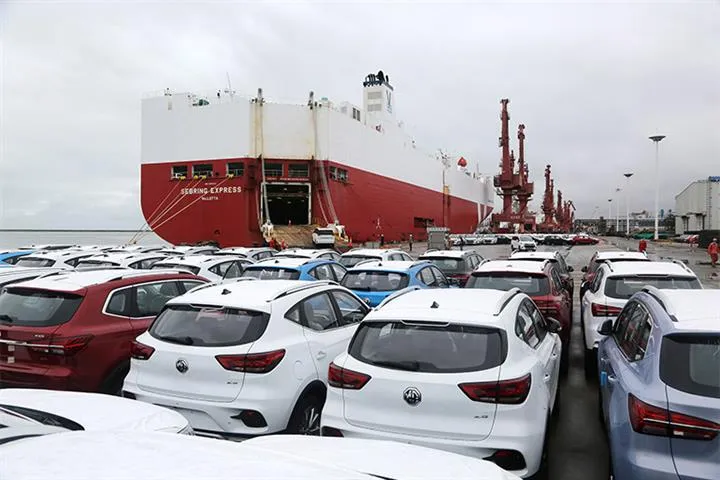





 Afrikaans
Afrikaans Shqip
Shqip አማርኛ
አማርኛ العربية
العربية Հայերեն
Հայերեն Azərbaycan dili
Azərbaycan dili Euskara
Euskara Беларуская мова
Беларуская мова বাংলা
বাংলা Bosanski
Bosanski Български
Български Català
Català Cebuano
Cebuano Chichewa
Chichewa 简体中文
简体中文 繁體中文
繁體中文 Corsu
Corsu Hrvatski
Hrvatski Čeština
Čeština Dansk
Dansk Nederlands
Nederlands English
English Esperanto
Esperanto Eesti
Eesti Filipino
Filipino Suomi
Suomi Français
Français Galego
Galego ქართული
ქართული Deutsch
Deutsch Ελληνικά
Ελληνικά Kreyol ayisyen
Kreyol ayisyen Harshen Hausa
Harshen Hausa Ōlelo Hawaiʻi
Ōlelo Hawaiʻi עִבְרִית
עִבְרִית हिन्दी
हिन्दी Hmong
Hmong Magyar
Magyar Íslenska
Íslenska Igbo
Igbo Bahasa Indonesia
Bahasa Indonesia Gaeilge
Gaeilge Italiano
Italiano 日本語
日本語 Basa Jawa
Basa Jawa ಕನ್ನಡ
ಕನ್ನಡ Қазақ тілі
Қазақ тілі ភាសាខ្មែរ
ភាសាខ្មែរ 한국어
한국어 كوردی
كوردی Кыргызча
Кыргызча ພາສາລາວ
ພາສາລາວ Latin
Latin Latviešu valoda
Latviešu valoda Lietuvių kalba
Lietuvių kalba Lëtzebuergesch
Lëtzebuergesch Македонски јазик
Македонски јазик Malagasy
Malagasy Bahasa Melayu
Bahasa Melayu മലയാളം
മലയാളം Maltese
Maltese Te Reo Māori
Te Reo Māori मराठी
मराठी Монгол
Монгол ဗမာစာ
ဗမာစာ नेपाली
नेपाली Norsk bokmål
Norsk bokmål پښتو
پښتو فارسی
فارسی Polski
Polski Português
Português ਪੰਜਾਬੀ
ਪੰਜਾਬੀ Română
Română Русский
Русский Samoan
Samoan Gàidhlig
Gàidhlig Српски језик
Српски језик Sesotho
Sesotho Shona
Shona سنڌي
سنڌي සිංහල
සිංහල Slovenčina
Slovenčina Slovenščina
Slovenščina Afsoomaali
Afsoomaali Español
Español Basa Sunda
Basa Sunda Kiswahili
Kiswahili Svenska
Svenska Тоҷикӣ
Тоҷикӣ தமிழ்
தமிழ் తెలుగు
తెలుగు ไทย
ไทย Türkçe
Türkçe Українська
Українська اردو
اردو O‘zbekcha
O‘zbekcha Tiếng Việt
Tiếng Việt Cymraeg
Cymraeg יידיש
יידיש Yorùbá
Yorùbá Zulu
Zulu